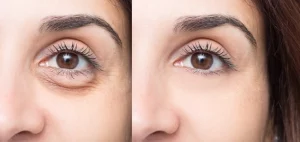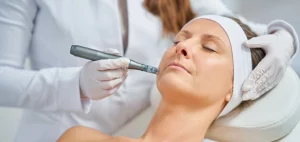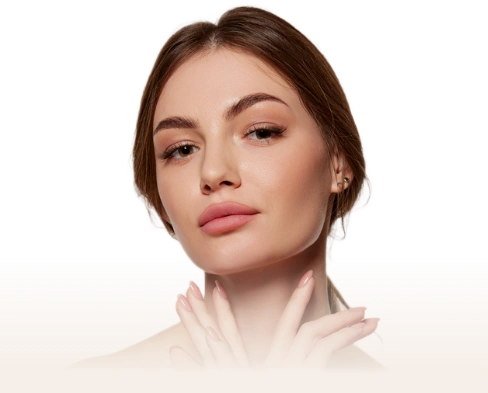Dermal fillers’ capacity to restore volume, reduce wrinkles, and improve facial lines has helped them become incredibly popular in cosmetic operations. However, one of the frequent worries among people thinking about their durability.
Generally, it gives temporary benefits, while the precise time frame varies depending on several factors, including the type of filler used and individual features.
The time frame might be from a few months to a few years, with follow-up treatments frequently needed to maintain the desired results. To make wise judgments and effectively manage their expectations, those seeking cosmetic modifications must understand the lifespan of dermal fillers.
What Are Dermal Fillers?
Injecting dermal fillers beneath the skin enhances facial contours, replaces lost volume, and smooths out wrinkles. These gel-like compounds, typically made of hyaluronic acid naturally found in the body, attract and hold moisture, providing hydration and plumpness to the skin.
When Do You Need Dermal Fillers?
Dermal fillers are popular for many different reasons. They frequently treat typical aging symptoms such as fine lines, wrinkles, and volume loss. As we grow older, the elasticity and fullness of our skin gradually decline, giving the appearance of open spots, sagging skin, and deep wrinkles.
Dermal fillers can assist in reversing these effects and restore a more youthful and revitalized appearance. Furthermore, fillers can accentuate particular features, like enhancing the cheekbones, enhancing the lips, or contouring the nose.
Benefits of Dermal Fillers
There are many benefits of dermal filler but some major benefits include:
1. Immediate Results: Dermal fillers offer an immediate improvement in the treated areas, as compared to other cosmetic treatments that can take weeks wait weeks or months to get the full effects.
2. Minimal Downtime: Dermal filler injections are minimally invasive, with little recovery time or downtime needed. Most people can get back to their regular routines immediately following the session. However, to maximize your outcomes and reduce any potential side effects, it’s crucial to adhere to the aftercare guidelines given by your aesthetic provider.
3. Customizable Treatments: Dermal filler provides great personalization to suit unique needs. Skilled injectors can customize. The treatment to address your unique problems and goals. To obtain natural-looking results and complement your distinctive facial features, they can modify the locations targeted, the injection technique, and the quantity of filler utilized.
4. Long-Lasting Effects: Dermal fillers can have long-lasting benefits, albeit the time frame varies based on the filler used, the treatment location, and the individual metabolism. Most patients have fillers reinjected every 1-2 years, depending on the injection location and the amount of fillers.
5. Gradual and Reversible Results: Dermal fillers also benefit from gradual and reversible effects. This enables modifications as needed, assuring your satisfaction with the result.
You have the option to dissolve certain fillers using an enzyme called hyaluronidase. This gives you the flexibility to change your mind or adjust the amount of filler, ensuring you feel confident and satisfied with your aesthetic choices.
How Long Does Dermal Fillers Last?
The type of filler used, the treatment region, and individual features are only a few variables that affect how long dermal fillers last. The approximate duration of certain frequently used dermal fillers is summarized below:
– Juvéderm: Lasts 6-18 months
– Restylane: Lasts 6-18 months
– Revanesse: Lasts 9-12 months
– Radiesse: Lasts 12-18 months
– Sculptra: Lasts up to 2 years
– Bellafill: Lasts 5+ years
*These are estimated durations, and individual results may vary.*
How Long Do Facial Fillers Last?
Facial fillers can provide a refreshed and youthful appearance. The Facial fillers typically range from 6 to 18 months, depending on the product and the patient’s metabolism.
How Long Do Nose Fillers Last?
The duration of nose fillers, which are used to reshape and accentuate the nose, ranges from 6 to 18 months. This time frame may change depending on the filler used and the patient’s unique circumstances.
How Long Do Cheek Fillers Last?
The average lifespan of cheek fillers, which give the cheekbones more volume and contour, is 6 to 18 months. The patient’s metabolism and the filler’s type may impact longevity.
How Long Do Lip Fillers Last?
For larger, better-defined lips, lip fillers are popular. With certain differences depending on the type of filler and unique circumstances, they normally last between 6 and 12 months.
How Long Do Chin Fillers Last?
Chin fillers, which improve the chin’s projection and form, typically last between 6 and 18 months. Individual results, however, can differ.
How Long Do Under Eye Fillers Last?
Dark circles, hollows, and under-eye bags can be treated with under-eye fillers, which normally last 6 to 12 months. The exact time may change depending on the product used and other conditions.
Filler Placement Problems
A qualified specialist must inject dermal fillers to prevent complications. Asymmetry, lumpiness, or migration are among the problems resulting from improper filler placement. Selecting a skilled injector is crucial to reduce these dangers and obtain the best outcomes.
Conclusion
It provides a non-surgical answer to several cosmetic concerns. Dermal fillers last for varying amounts of time, depending on the substance used, the treatment location, and individual characteristics. Speak with a skilled specialist for advice on the best for your needs and more information on how dermal filler may be an option for you.
FAQs
1. Are dermal filler better than Botox?
Dermal fillers are as effective as Botox. Depending on the type utilized, dermal fillers have varying life spans. Some fillers can produce benefits for over a year, with some lasting longer than Botox. Botox, a neurotoxin that relaxes muscles, is advised for particular locations like crow’s feet, forehead wrinkles, and frown lines. On the other side, dermal fillers increase volume and minimize wrinkles. The optimal treatment solutions based on unique goals can be determined with the assistance of a medical expert.
2. What is dermal filler best for?
Dermal fillers can be used in certain ways by adults and older. Correcting moderate-to-severe face wrinkles and skin folds is one of those purposes. Lips, cheeks, chin, under-eye hollows, jawline, and back of the hand become more plump.F
3. Is dermal filler safe?
Certain fillers can enhance the appearance of acne scars. It is important to note that not all fillers on the market are FDA-approved. We recommend seeking reputable practices, such as Syra Aesthetics, that exclusively use FDA-approved fillers to ensure your safety and optimal results.
4. What is the difference between dermal fillers and Botox?
Injecting dermal fillers beneath the skin plumps out the hands or face and smooths wrinkles. Botox (onabotulinumtoxinA) is injected into specific muscles to relax them. Besides treating various medical conditions, Botox can effectively smooth out wrinkles as well. Botox and dermal fillers typically have little side effects.

About The Author
Dr. Syra Hanif M.D.
Board Certified Primary Care Physician
Dr. Hanif is the Director of Aesthetic Medicine. She is a board-certified physician in Aesthetic Medicine who specializes in using non-surgical alternatives in order to enhance one's appearance through Botox and fillers.
Read More











